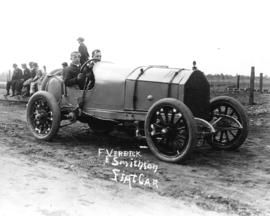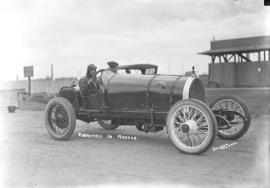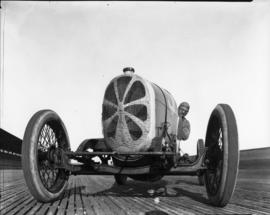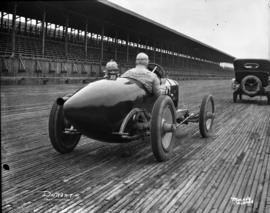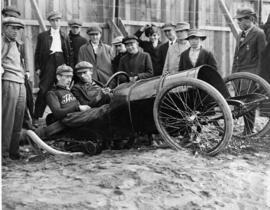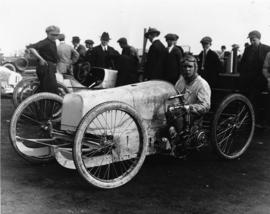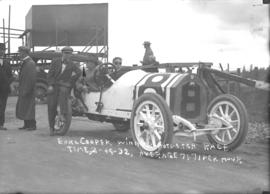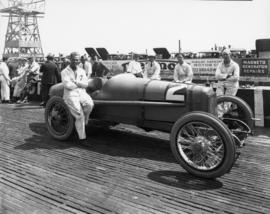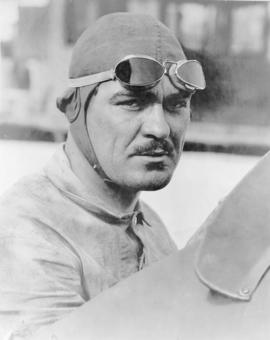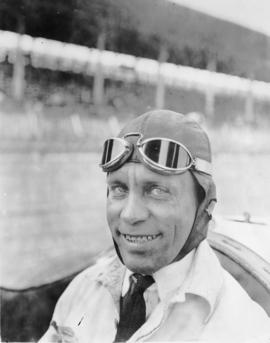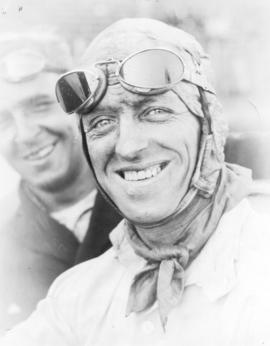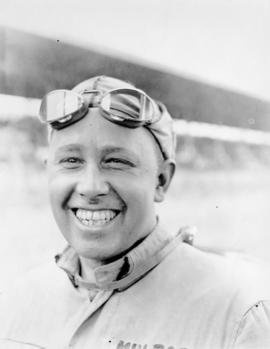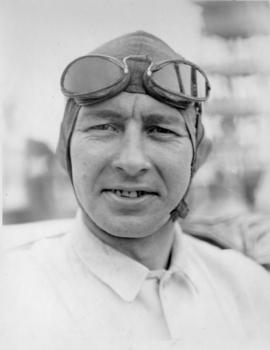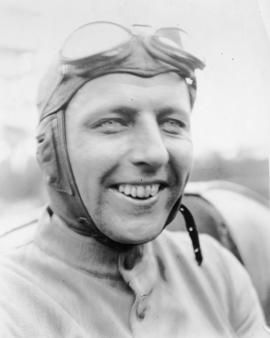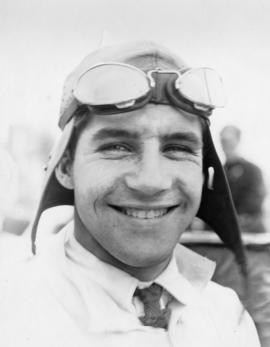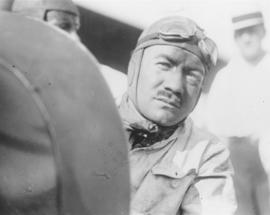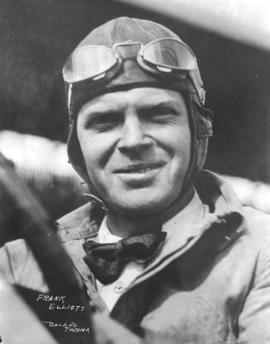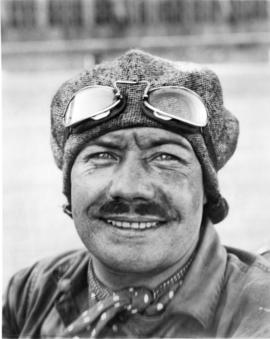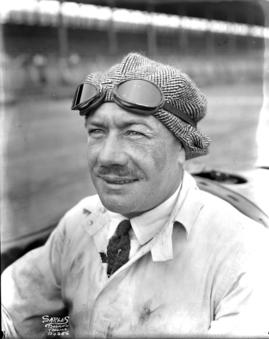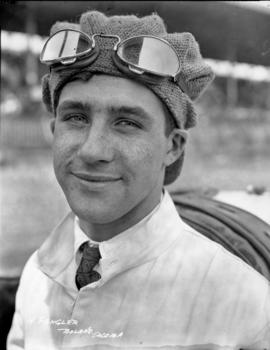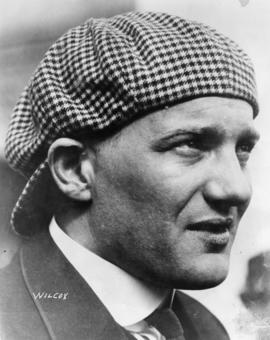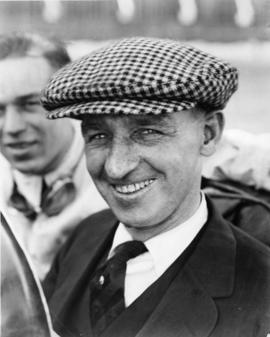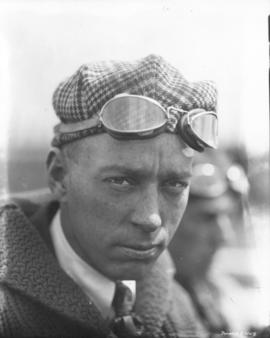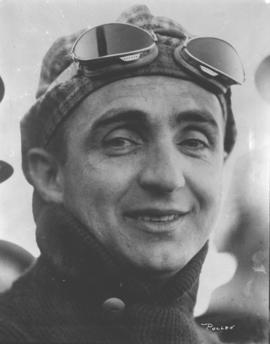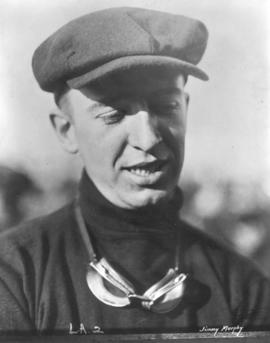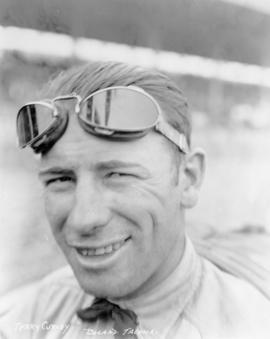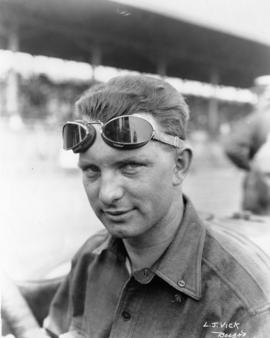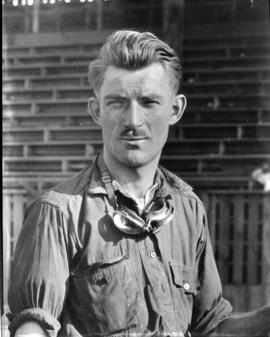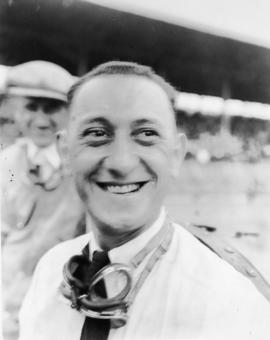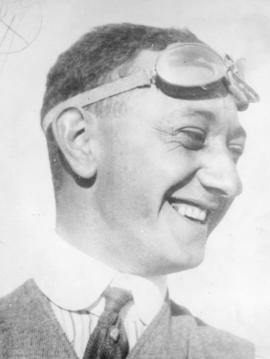- Item
- 1914
Part of Marvin Boland Photographs
ca. 1914. Frank Verbeck and his "mechanician," Forrest C. Smithson are pictured in their Fiat "70" which had been entered in the 200-mile Golden Potlatch and 250-mile Montamarathon races at the Tacoma Speedway in early July of 1914. Mr. Verbeck had raced in Tacoma in 1912 but not the following year. He held the 24 hour record on the Los Angeles motordrome. The Fiat had been the car of Mr. Verbeck's former teammate, "Terrible Teddy" Tetzlaff, who this year would run in a Maxwell. Mr. Verbeck along with several other notable racers showed up about two weeks before the race along with their cars. Forrest C. Smithson, the "mechanician," was a world class hurdler who was making his first appearance in Tacoma. He was an Olympic champion in 1908 and held numerous American records. TPL-10151 (TNT 6-21-14, 2-B-article; TNT 6-28-14, 3-D-alt. photograph & article)
Verbeck, Frank; Smithson, Forrest C.; Tacoma Speedway (Lakewood); Racetracks--Lakewood--1910-1920; Automobile racing--Lakewood--1910-1920; Fiat automobile;
